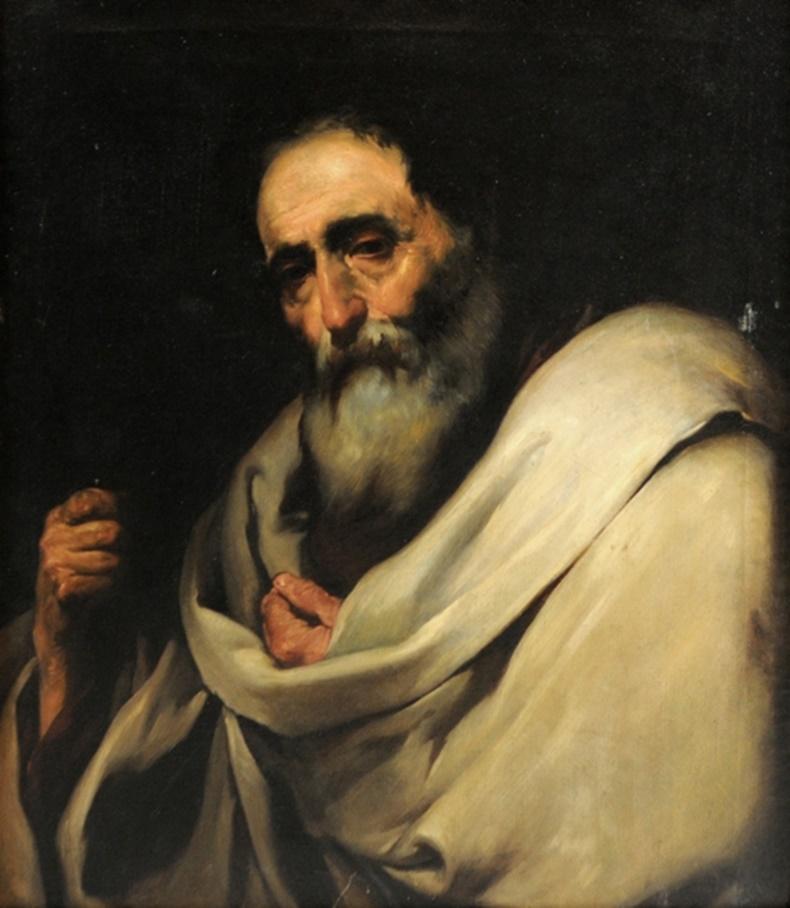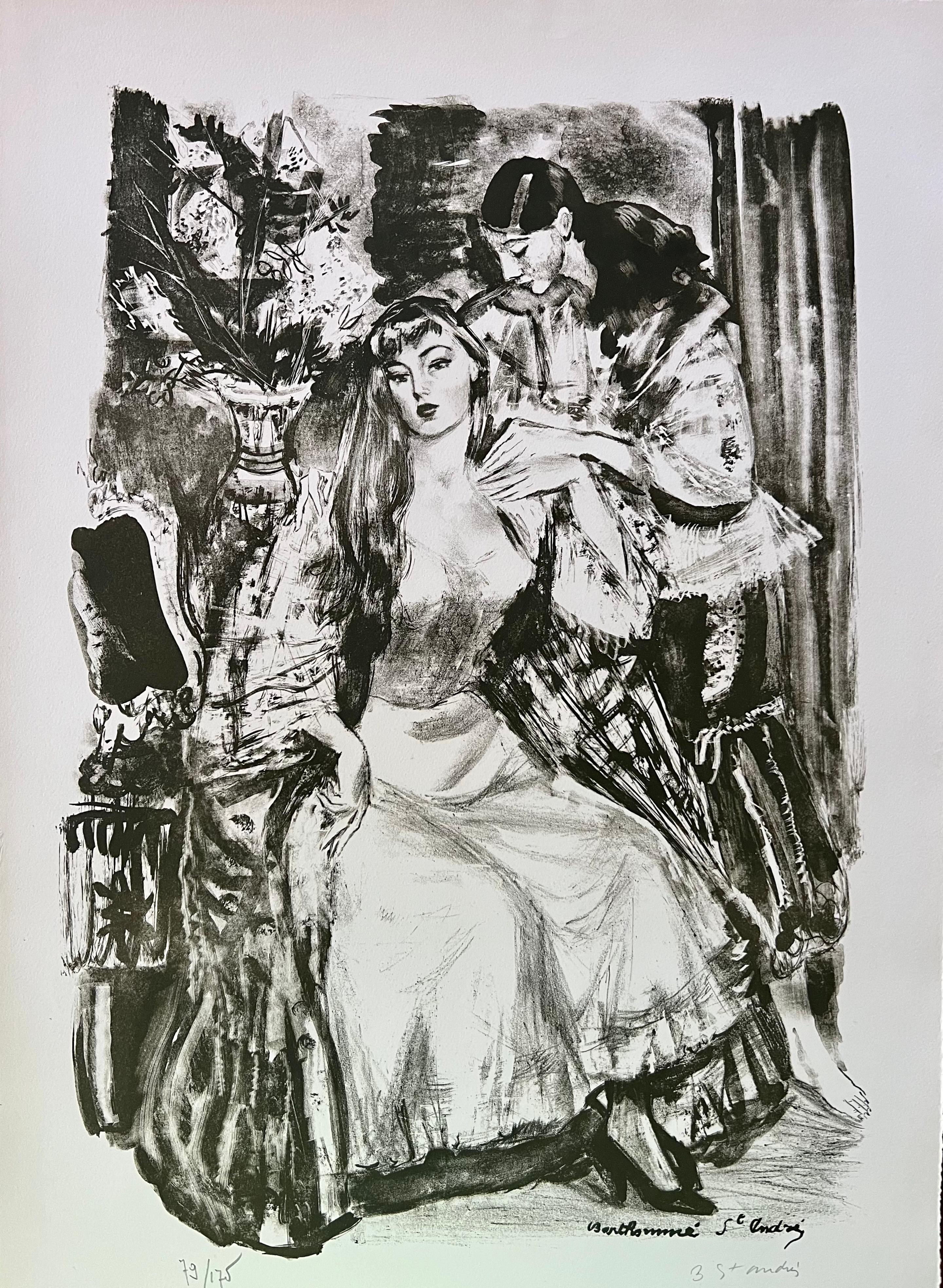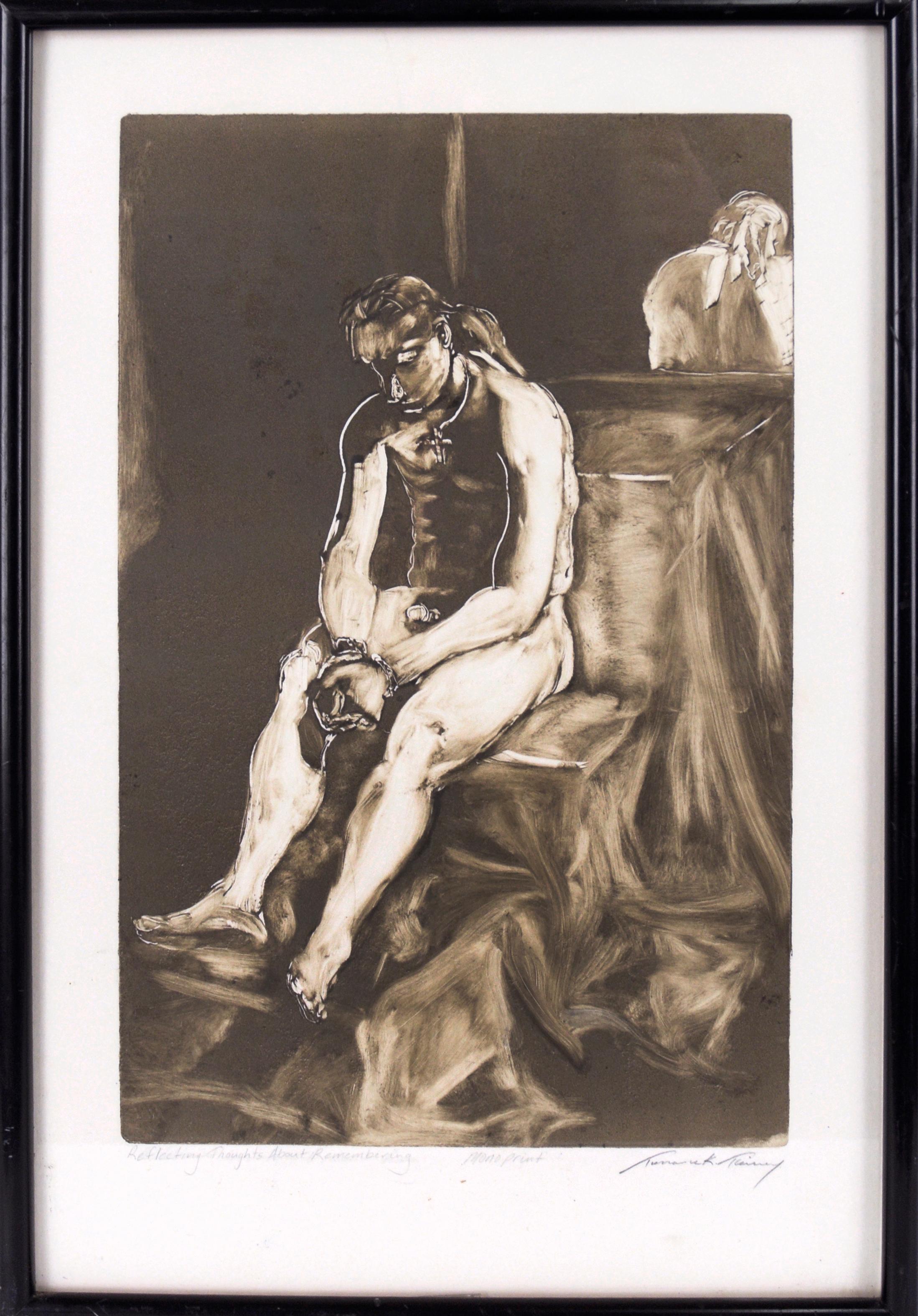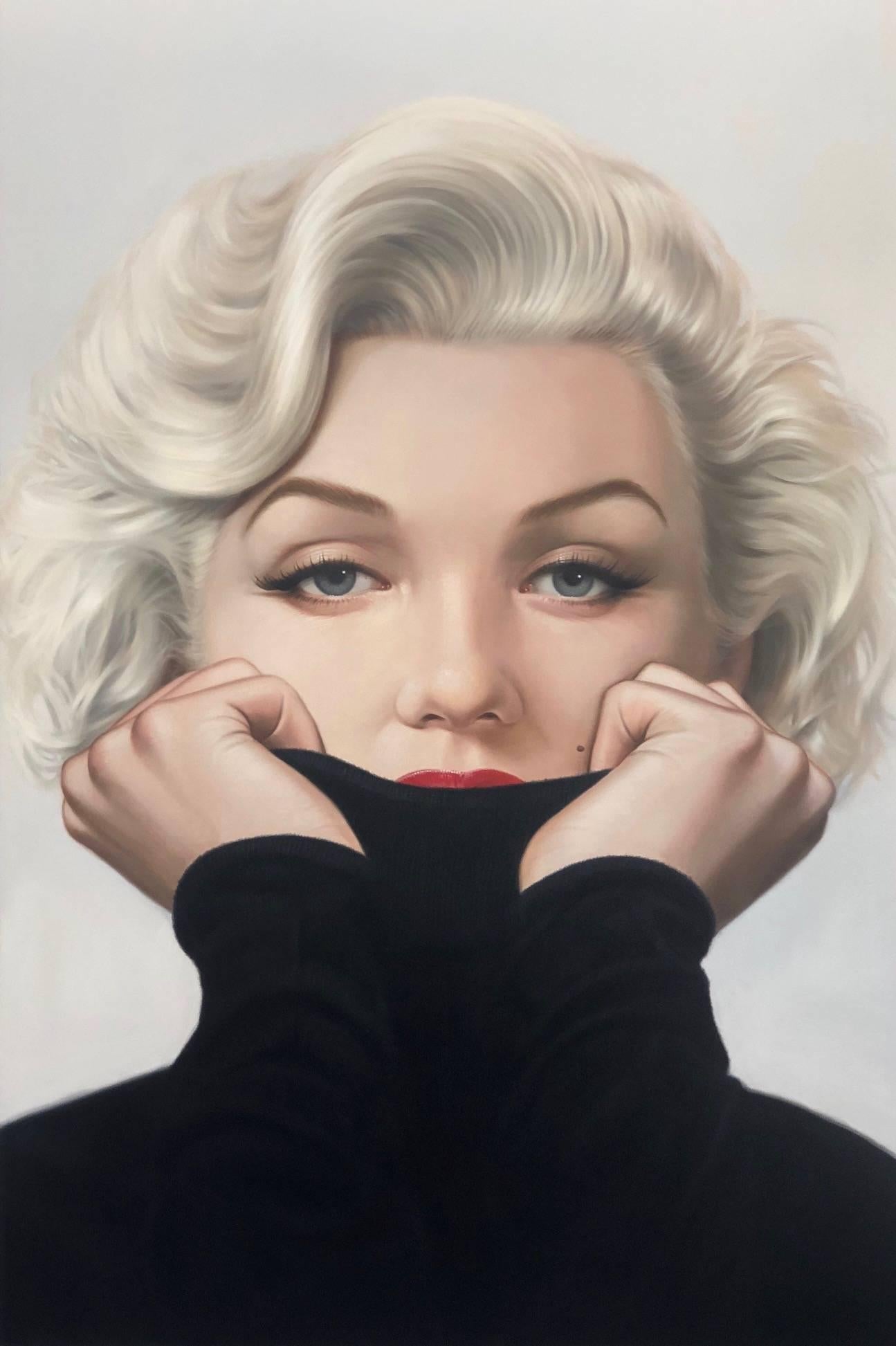Items Similar to Horses resting at the watering place Oil on canvas by Jules Pierre Van Biesbroec
Want more images or videos?
Request additional images or videos from the seller
1 of 17
Jules Pierre Van Biesbroeck Horses resting at the watering place Oil on canvas by Jules Pierre Van Biesbroec
About the Item
Horses resting at the watering place Oil on canvas by Jules Pierre Van Biesbroeck
Jules Van Biesbroeck was born in Italy in 1873 during his parents settled there. Indeed, his father was the Belgian painter named Jules Evarist Van Biesbroeck. Like many of the artists of his time, he was working in Italy when his son Jules was born. The young boy first lived in Italy and his family came back to Ghent when he was two. He followed his first apprenticeship with his father and then joined the class of Kuhnen at the shool of Fine Arts. He was a child prodigy who sold his first painting "The Shepherd" at the early age of 14 during the Triennial Ghent Exhibition.
On the next year, he first exhibited in Paris, at the Salon of the Champs Elysées. He stood out with a monumental painting and especially by his nude models. The painting scandalized the censors, and the young artist was asked to cover his characters with veils before the exhibit. The work of this teenager was finally recognized, and the jury gave him an honorable mention on the recommendation of William Bouguereau himself.
He won fame in painting as well as in sculpture. In 1897, he arrived at the second position, behind Henri Boncquet, at the Belgian Prize of Rome in the sculpture class and in 1898 he gained the same position in the painting class.
A few years later, he received orders for the city of Ghent to realize many monuments. He took part in many international events, of whom the 1900s Universal Exhibition in Paris. In 1901, he was awarded with a gold medal during the Art International Exhibition of Glaspalast in Munich and once more by the city of Milan in 1906. He became unanimously a member of the Accademia di Belle Arti di Brera in 1910. He painted symbolist work before turning to orientalism. Because of WWI he left Brussels in 1914 and settled in Bordighera, in the villa “Nid Propre” where he dedicated himself to impressionist painting and sculpture.
Finally appealed by new horizons, he started to travel in North Africa in 1926. Then in 1927, he discovered Algeria, which was for him a real revelation. He changed his palette to lighter tones and represented orientalist scenes, most precisely the inhabitants of Bou-Saada. He stayed in Algeria until 1938, and back to Ghent, where he mainly continued to paint orientalist paintings.
- Creator:Jules Pierre Van Biesbroeck
- Dimensions:Height: 31.89 in (81 cm)Width: 39.38 in (100 cm)Depth: 1.58 in (4 cm)
- Medium:
- Period:
- Condition:
- Gallery Location:Gent, BE
- Reference Number:1stDibs: LU2140213767752
About the Seller
5.0
Vetted Seller
These experienced sellers undergo a comprehensive evaluation by our team of in-house experts.
Established in 2018
1stDibs seller since 2022
Typical response time: 16 hours
- ShippingRetrieving quote...Ships From: Gent, Belgium
- Return PolicyA return for this item may be initiated within 10 days of delivery.
More From This SellerView All
- Obersee by François Roffiaen (1820-1898) Oil on canvasLocated in Gent, VOVThe Watsman, a painted view between Obersee and Koningsee, Upper Bavaria. Study painted in 1856 by François Roffiaen. François Roffiaen (1820-1898): Biography François Roffiaen's f...Category
19th Century Figurative Paintings
MaterialsCanvas, Oil
- The blind man, oil on canvas by Maurice LangaskensBy Maurice LangaskensLocated in Gent, VOVA masterfully painted scene originating from the artist's studio In this painting, Langaskens brings together several motifs that were also the subject of his graphic work: the blind man, the priest, the nun and the farm that also appears in the famous etching "les toits rouges" (the red roofs). These elements are brought together in a dynamic and colourful composition, where the similarities to that other Belgian painter, Anto Carte, are striking. Combining these elements in this way creates a certain tension. Is the work about mercy (helping a blind man), or are we spectators of a scene where a poor wretch's purse is stolen? Striking is the use of impasto, in which the painter emphasises the texture of fabrics and skin via flowing lines. Maurice Langaskens 1884 - 1946 Biography A Belgian painter and printmaker, Maurice (Maurits) Langaskens enrolled in the Académie Royale des Beaux-Arts in Brussels in 1901, and was trained as a decorative painter by the leading Belgian muralist and sculptor Constant Montald. From early on, Langaskens was recognized as a fine draughtsman, and won several prizes at the Académie. After living and studying for a few months in France in 1906, mainly in Dijon, the young Langaskens settled in Schaerbeek, outside Brussels. He began his independent career in 1907, when he exhibited three decorative paintings at the Salon in Brussels for the first time and also had an exhibition of his work shown at the Salle Boute in the city. The following year he contributed six paintings to the 16th annual exhibition of the Belgian artist’s association ‘Pour l’Art’ in Brussels, where he was to exhibit frequently over the course of his later career, until 1941. (Langaskens also designed the poster for the 17th ‘Pour l’Art’ exhibition in 1909.) Also in 1908, one of his paintings was selected for an exhibition of modern Belgian art in Berlin. Much of Langaskens’s early work was in a vibrant and visually arresting Art Nouveau or Symbolist style. This bold and colourful manner also translated well into large-scale mural commissions, and he soon became one of the leading painter-decorators of the early 20th century in Belgium. His decoration of the town hall of the city of Zoutleeuw in 1912 earned the artist considerable fame and the praise of his teacher and mentor Montald: ‘He was one of the best students in the class; today he is the most outstanding artist among the decorators of our time.’ The same year the first of several exhibitions of Langasken’s work was mounted at the Cercle Artistique et Littéraire in Brussels. The outbreak of the First World War, however, brutally interrupted the rise of the artist’s successful career. Drafted into the Belgian army at the beginning of August 1914, Langaskens was captured by the Germans after less than a fortnight. He spent the next three and half years as a prisoner of war, at internment camps at Sennelager, Münsterlager and Göttingen. He produced numerous, mostly small-scale paintings and watercolours of portraits and depictions of many of his fellow prisoners, as well as scenes of daily camp life, that are today regarded as among his finest and most personal works. It was also during this period that he painted two of his best-known pictures, the large canvas In Memoriam, painted in 1916 and depicting the burial of a Belgian soldier by his comrades, and the monumental triptych Repose en Paix, painted between 1915 and 1918. After his liberation and return to Belgium, Langaskens exhibited over eighty of the paintings and drawings that he had produced as a prisoner of war at the Galerie Sneyers in Brussels in 1918. After the Armistice, Langaskens - suffering from aphasia and nervous disorders brought about by his long confinement - painted mainly easel pictures of winter landscapes, rustic genre scenes and floral subjects, and also produced a number of designs for tapestries, book illustrations and stained-glass windows. Within a few years, however, his health had recovered and he returned to undertaking large-scale decorative mural commissions. In 1920 Langaskens was one of the founders, alongside Montald, Jean Delville, Emile Fabry...Category
20th Century Figurative Paintings
MaterialsCanvas, Oil
- Boy with a fluteBy Leon HerboLocated in Gent, VOVLéon HERBO (1850-1907), Young boy with a flute, oil on canvas, signed upper left and dated 1879. This painting seems inspired by the painting "Singing Boy with a Flute" by the Dutch ...Category
Late 19th Century Dutch School Figurative Paintings
MaterialsCanvas, Oil
- Riders and Bedouins walking on a path near a cliff, Oil on panel by Honoré BOZELocated in Gent, VOVCavaliers et bédouins marchants sur un chemin près d’une falaise. (panneau 32 *20 cm) Honoré Boze est un peintre orientaliste français, né à l'île Maurice...Category
19th Century Figurative Paintings
MaterialsCanvas, Oil
- Washerwomen by the river, oil on canvas by Karl GirardetLocated in Gent, VOVThis painting is part of a series of paintings Girardet made of washerwomen by the river. Upon their presentation they had a considerable success, which endures till now. In 2008 another painting of this series was sold at Christie's . Karl Girardet was born in 1813 in Le Locle, which at the time was part of France but is now part of Switzerland. Girardet lived and worked most of his life in Paris. After beginning his career as a painter of landscapes, he became a well-known history painter. As a confidant of the French king Louis Philippe I...Category
Late 19th Century Realist Figurative Paintings
MaterialsCanvas, Oil, ABS
- Afternoon tea , 1912 Oil on canvas Auguste Moreau-Deschanvres (1838-1913)Located in Gent, VOVAuguste Moreau-Deschanvres (1838-1913) A student of Julien Potier at the Valenciennes academic schools, the painter Auguste Moreau-Deschanvres (1838-1913) lived in the house-studio h...Category
20th Century Figurative Paintings
MaterialsCanvas, Oil
You May Also Like
- Saint Bartholomew, Old Master, Oil Print, Ribera, Figurative Art, Spanish ArtBy Jusepe de RiberaLocated in Greven, DEOld Master An Oil Print after a Painting by Jusepe de Ribera in the Museo del Prado, Spain. This is an early print after the original.Category
20th Century Baroque Figurative Prints
MaterialsOil, Canvas
- Orit Fuchs: Vivid 38 - Oil on Cavas female figure painting. 40/40"By Orit FuchsLocated in Tel Aviv, ILOrit Fuchs lives and works in Tel Aviv, a storyteller with a deep, pure, and unquenchable appetite for artistic self-expression. Her medium spans the gamut - sculptures, pa...Category
2010s Pop Art Figurative Paintings
MaterialsOil, Canvas
- untitled woman in boudoir original lithographBy Louis Berthomme Saint-AndreLocated in Belgrade, MTThis lithograph is part of my private collection and in very good condition. It is original, numbered and signed by the artist in the plate and on the print. Guilde de la Gravure.Category
Mid-20th Century Post-Impressionist Figurative Prints
MaterialsOil, Lithograph
- "Reflecting Thoughts About Remembering" - Monoprint on PaperLocated in Soquel, CA"Reflecting Thoughts About Remembering" - Monoprint on Paper Sepia colored monoprint of a male figure "reflecting and remembering." A nude male figure sits with his head facing down...Category
1970s Abstract Expressionist Figurative Prints
MaterialsPaper, Oil
- SugarBy Michael MoebiusLocated in Los Angeles, CAMichael Moebius Sugar Limited Edition Giclée Print on Canvas Available in two sizes: 48 x 72 inches Limited edition of 25 30 x 40 inches Limited edition of 250 Signed and numbered by...Category
2010s Contemporary Figurative Paintings
MaterialsCanvas, Giclée
- SugarBy Michael MoebiusLocated in Los Angeles, CAMichael Moebius Sugar Limited Edition Giclée Print on Canvas 30 x 40 inches Limited edition of 250 Signed and numbered by artist Unframed Currently on display at Art Angels Gallery ...Category
2010s Contemporary Figurative Paintings
MaterialsCanvas, Giclée
Recently Viewed
View AllMore Ways To Browse
Prints With A Lemon
Synagogue Germany
Lithographs By Daumier
Initials J M
Arrange 3 Pictures
Iron Bird Cage On Stand
Standing Antique Bird Cage
Erte Pink
Pettibon Signed
Alfred Bendiner Lithographs
George Washington Carver
Saul Steinberg Cat
Ai Weiwei Finger
Stable 1954
Original Fashion Illustration Vienna
Military Coffee Table Chess
Lichtenstein Dagwood
Cassigneul Lithograph





